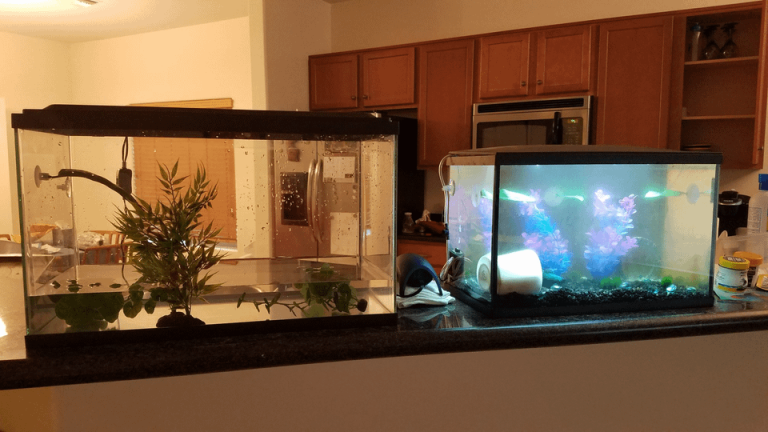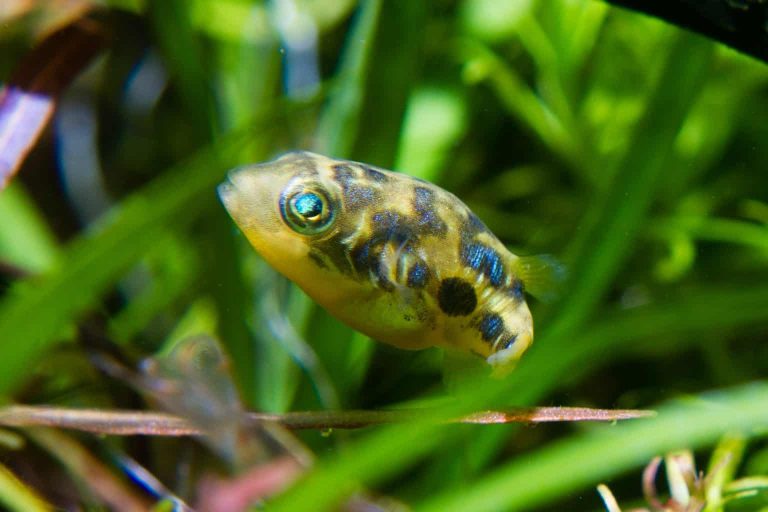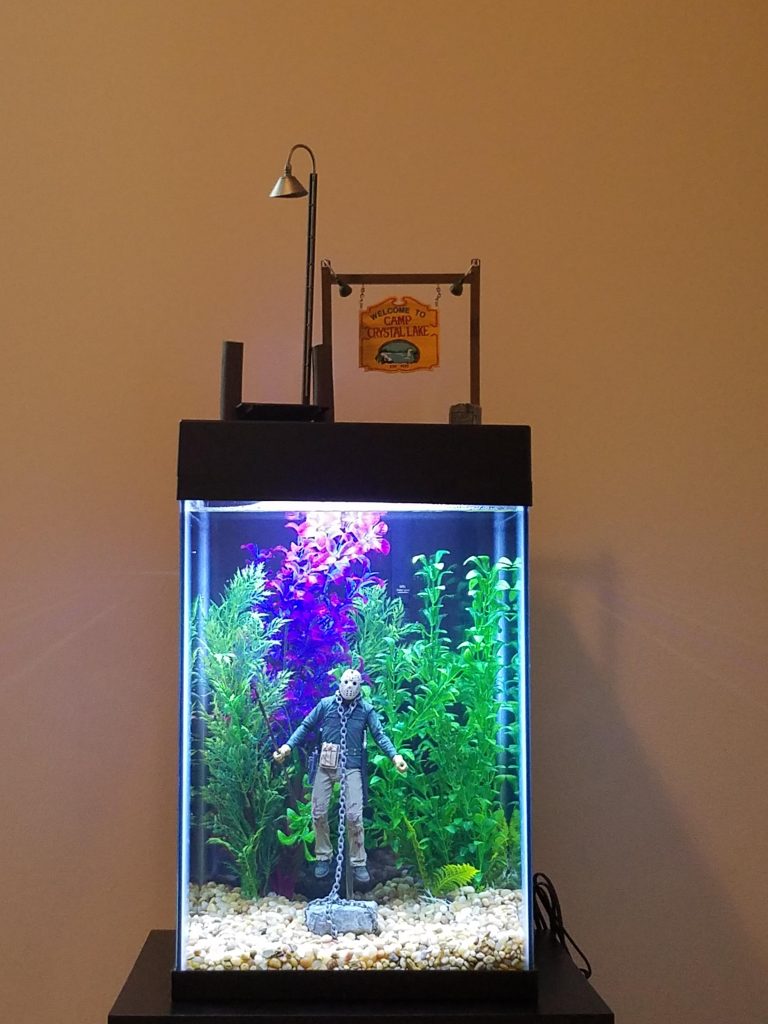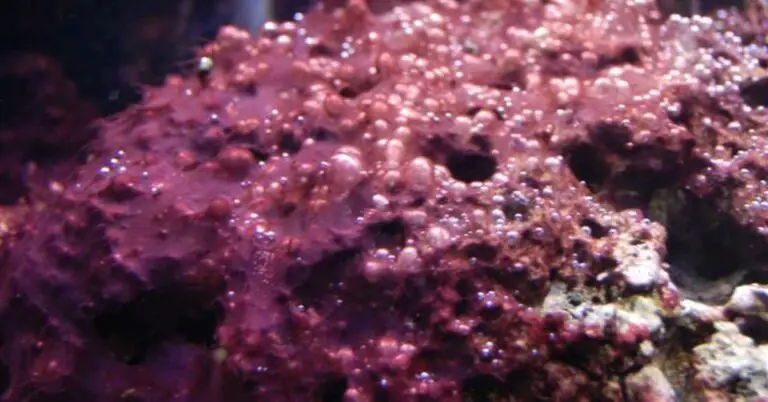How to Effortlessly Feed Fish in Your Wall Aquarium: Pro Tips
To feed fish in a wall aquarium, use a small amount of food and sprinkle it on the water surface. Feeding fish in a wall aquarium requires a certain level of care and attention.
Wall aquariums are unique and visually stunning, but they can pose some challenges when it comes to feeding the fish. In this article, we will guide you on how to properly feed fish in a wall aquarium. Whether you are a beginner or an experienced aquarium owner, these tips will ensure that your fish are well-nourished and thriving in their beautiful aquatic environment.
So, let’s dive in!

Credit: pethelpful.com
Understanding The Setup Of A Wall Aquarium
If you’re a fish enthusiast looking to add a unique touch to your home or office, a wall aquarium could be the perfect choice. These stunning installations not only provide a mesmerizing view of aquatic life but also save precious space.
However, before plunging into the world of wall aquariums, it’s important to understand their setup and requirements. In this section, we will explore different types of wall aquariums, considerations for size and location, as well as proper installation and maintenance techniques.
Different Types Of Wall Aquariums
Wall aquariums come in various shapes and sizes, each offering its unique features. Here are a few popular types to consider:
- Rectangular wall aquariums: This classic style is known for its simplicity and versatility, making it suitable for most spaces.
- Cylinder wall aquariums: These cylindrical-shaped aquariums add a touch of elegance and create a stunning focal point in any room.
- Corner wall aquariums: Designed specifically to fit into corners, these aquariums maximize space utilization, making them ideal for smaller rooms.
- Built-in wall aquariums: These custom-made aquariums seamlessly blend into the surrounding wall, creating a sleek and sophisticated look.
Considering The Size And Location Of Your Wall Aquarium
When choosing a wall aquarium, it’s crucial to consider the available space and location within your home or office. Here are a few key points to keep in mind:
- Measure the wall: Determine the dimensions of the wall where you plan to install the aquarium. This will help you select an appropriately sized aquarium that fits seamlessly into the space.
- Consider weight-bearing capacity: Wall aquariums can be heavy, especially when filled with water. Ensure that the wall has adequate structural support to handle the weight.
- Analyze lighting conditions: Fish require appropriate lighting to thrive. Take note of the natural light sources in the room and consider how they may impact the visibility and health of the fish.
Proper Installation And Maintenance
To ensure the longevity and health of your wall aquarium, proper installation and maintenance are crucial. Here are some guidelines to follow:
- Seek professional help: Unless you have experience with aquarium installations, it’s recommended to consult a professional for proper installation. They will ensure all essential components, such as filtration systems and lighting, are set up correctly.
- Regular cleaning: Like any aquarium, wall aquariums require regular cleaning to maintain optimal water quality. Regularly testing water parameters and performing partial water changes are essential tasks.
- Feeding routine: Develop a consistent feeding routine for your fish while considering their dietary needs. It’s important to feed them appropriate portions while avoiding excessive food that may lead to water contamination.
By understanding the setup of a wall aquarium, you’ll be better equipped to choose the right type, size, and location for your space. Don’t forget to follow proper installation and maintenance practices to create an environment where your fish can thrive.
So, let’s dive into the world of wall aquariums and bring the beauty of underwater life to your living or work space.
Selecting The Right Fish For Your Wall Aquarium
Feeding fish in a wall aquarium can be a unique and visually stunning way to bring a touch of nature into your home. However, it’s important to consider various factors when selecting the right fish for your wall aquarium. By choosing fish that thrive in confined spaces, ensuring compatibility between different species, and taking into account their size and behavior, you can create a harmonious and healthy environment for your aquatic pets.
Let’s dive deeper into these key considerations:
Choosing Fish That Thrive In Confined Spaces:
- Opt for species that are well-suited for small living spaces, such as nano fish or dwarf varieties.
- Look for fish that have a naturally slow or gentle swimming pace, as they will be more comfortable in a confined environment.
- Consider bottom-dwelling fish that stay close to the substrate and do not require a lot of vertical space to thrive.
Compatibility Of Different Fish Species:
- Research each species’ temperament and behavior before introducing them to your wall aquarium to ensure they can coexist peacefully.
- Avoid combining fish that have a tendency to be aggressive or territorial, as this can lead to stress and potential harm to other inhabitants.
- Consider choosing fish with similar water parameter requirements to simplify the maintenance of your aquarium.
Considering The Size And Behavior Of Fish:
- Take into account the adult size of the fish species you are considering and ensure it is suitable for the dimensions of your wall aquarium.
- Avoid stocking fish that are known to be fin nippers or highly active swimmers, as this can cause distress to other fish in the confined space.
- Keep in mind the specific needs and preferences of the fish you are interested in, such as whether they prefer to shoal or be solitary.
Remember, it is crucial to provide a suitable and comfortable environment for your fish to thrive. By carefully selecting fish that are well-suited for confined spaces, ensuring compatibility between different species, and considering their size and behavior, you can create a visually stunning wall aquarium that is also a healthy and harmonious habitat for your aquatic pets.
Creating An Optimal Feeding Routine For Your Wall Aquarium
Feeding your fish in a wall aquarium requires more than just dropping food into the tank. To ensure the health and well-being of your aquatic pets, it’s crucial to establish a proper feeding routine. Understanding their dietary requirements, choosing the right fish food, and determining the frequency and portion size are all key factors in maintaining a thriving underwater ecosystem.
Let’s delve into each of these aspects to help you create an optimal feeding routine for your wall aquarium.
Understanding The Dietary Requirements Of Your Fish
Before diving into the feeding routine, it’s important to understand the dietary needs of your fish. Different species of fish have different nutritional requirements, and providing the right type of food is essential for their growth and overall health. Keep the following points in mind:
- Research the specific dietary preferences of your fish species, including whether they are herbivores, carnivores, or omnivores.
- Some fish require a specific type of diet, such as live or frozen foods, while others can thrive on dry flakes or pellets.
- Consider the natural habitat of your fish to determine if they require additional supplements, such as algae-based foods or special treats.
Choosing The Right Type Of Fish Food
Once you have a good understanding of your fish’s dietary requirements, it’s time to select the appropriate fish food. Consider the following factors when choosing the right type of fish food for your wall aquarium:
- Look for high-quality fish food that is specially formulated for your fish species.
- Consider the size of the food particles, ensuring they are suitable for the mouths of your fish.
- Opt for a variety of fish food types, such as flakes, pellets, or freeze-dried options, to provide a balanced diet.
- Avoid overfeeding by selecting a fish food that does not cloud the water or create excessive waste.
Frequency And Portion Size For Feeding
Establishing a feeding frequency and portion size is crucial to maintain a healthy and thriving aquarium environment. Implement the following guidelines to create an optimal feeding routine:
- Feed your fish small amounts multiple times a day, rather than one large feeding. This mimics their natural feeding behavior.
- Monitor your fish closely during feeding to ensure they consume the food within a few minutes. Remove any uneaten food promptly to prevent water contamination.
- Adjust the portion size based on your fish’s appetite and growth. Avoid overfeeding, as it can lead to obesity, water quality issues, and other health problems.
- Consider fasting your fish for one day a week to allow their digestive systems to rest and prevent overeating.
By understanding the dietary requirements of your fish, choosing the right type of fish food, and establishing a feeding routine that includes the correct frequency and portion size, you can create an optimal feeding routine for your wall aquarium. This not only ensures the well-being of your fish but also promotes a vibrant and thriving aquatic ecosystem.
So go ahead and provide your fish with the nourishment they need for a happy and healthy life underwater.
Effective Techniques For Feeding Fish In A Wall Aquarium
Having a wall aquarium can be a breathtaking addition to any room. The sight of fish gracefully swimming in a beautifully designed display can create a sense of tranquility and wonder. However, to ensure the well-being of your aquatic friends, it’s essential to understand effective techniques for feeding fish in a wall aquarium.
This way, you can provide them with the proper nutrition they need to thrive. In this section, we will explore three key strategies for feeding fish in a wall aquarium that will ensure their health and happiness. Let’s dive in!
Utilizing Feeding Rings Or Stations:
- Feeding rings or stations can help prevent food from scattering throughout the tank, making it easier for fish to locate and consume their meal.
- By using a feeding ring or station, you can ensure that all the fish have access to food, preventing dominance dynamics or competition for resources.
- These tools can also be useful for keeping the tank clean, as they help contain uneaten food, reducing waste accumulation in the aquarium.
Training Your Fish To Come To Specific Areas For Feeding:
- Training your fish to come to specific areas for feeding not only allows for easier mealtime monitoring but also stimulates their natural foraging instincts.
- Start by consistently feeding your fish in one designated spot, associating it with food.
- Over time, the fish will learn to gather in that area, making it convenient for you to feed them and observe their feeding habits.
Monitoring Feeding Habits And Adjusting Strategies:
- Pay attention to your fish’s feeding habits and adjust your feeding strategy accordingly.
- Observe if all the fish are consuming their food or if some are being left out. If so, consider using different food types or adjusting feeding times.
- Ensure that the fish are receiving a balanced diet by incorporating a variety of foods into their feeding routine.
Remember, the goal is to create a feeding routine that ensures all the fish in your wall aquarium receive adequate nutrition while promoting a peaceful and enjoyable feeding experience. By utilizing feeding rings or stations, training your fish to come to specific areas, and monitoring their feeding habits, you’ll be on your way to maintaining a healthy and harmonious aquatic environment.
Pro Tips For Maintaining Water Quality In A Wall Aquarium
Maintaining the cleanliness and water quality in your wall aquarium is crucial for the health and well-being of your fish. Neglecting these important factors can lead to poor fish health, algae growth, and water cloudiness. By following some pro tips and implementing proper care routines, you can ensure a thriving underwater ecosystem in your wall aquarium.
Here are a few key points to keep in mind:
Regular Cleaning And Water Changes:
- Conduct regular water changes: Regularly changing a portion of the water in your wall aquarium helps remove waste and toxins that can accumulate over time. Aim to change approximately 20-30% of the water every two to four weeks.
- Clean the aquarium surfaces: Use a algae scraper or sponge to clean the walls of the aquarium and remove any algae buildup. Regular cleaning prevents the buildup of unsightly algae and ensures clear visibility.
- Vacuum the substrate: Gently vacuuming the gravel or substrate at the bottom of your wall aquarium helps to remove uneaten food, debris, and waste. This prevents the accumulation of harmful substances and keeps the water clean.
Monitoring Ph Levels And Temperature:
- Keep an eye on ph levels: Fish have specific ph requirements for optimal health. Test the ph level of your wall aquarium regularly using a test kit and adjust accordingly to maintain the ideal range for your fish species.
- Monitor the temperature: Different species of fish have specific temperature requirements. Use a reliable aquarium thermometer to keep track of the water temperature and ensure it remains within the appropriate range.
Maintaining Appropriate Filtration Systems:
- Choose the right filter: Investing in a high-quality filtration system is essential for maintaining water quality in your wall aquarium. Select a filter appropriate for the size of your aquarium and the needs of your fish.
- Regularly clean and replace filter media: Filtration media, such as mechanical, chemical, and biological filters, need regular cleaning or replacement to ensure optimal functionality. This helps to remove impurities, toxins, and excess nutrients from the water.
By following these pro tips, you can create an optimal environment for your fish and ensure the water quality in your wall aquarium remains healthy and balanced. Remember to conduct regular cleaning and water changes, monitor ph levels and temperature, and maintain an appropriate filtration system.
Your fish will thank you for the clean and nourishing home you provide.
Frequently Asked Questions On How To Feed Fish In Wall Aquarium
How Often Should I Feed Fish In A Wall Aquarium?
You should feed your fish in a wall aquarium once or twice a day, depending on the size and species of the fish.
What Type Of Food Should I Use For Fish In A Wall Aquarium?
It is recommended to use high-quality, commercially available fish food specifically designed for the species in your wall aquarium.
Can I Overfeed My Fish In A Wall Aquarium?
Yes, overfeeding can lead to water pollution and health problems for the fish. Feed them only what they can consume in a few minutes.
How Do I Feed Fish In A Wall Aquarium While I’M Away?
You can use automatic fish feeders that dispense small amounts of food at pre-set times, ensuring your fish are fed even when you’re not there.
Conclusion
Feeding fish in a wall aquarium requires some careful considerations to ensure the health and well-being of your aquatic pets. By understanding the specific needs of the fish species in your tank, you can tailor their diet accordingly, providing them with a balanced and nutritious meal.
It is important to choose the right type and size of food, taking into account the size of the fish and their feeding habits. Regular observation and monitoring of their feeding behavior will help you gauge the right amount of food to give, preventing overfeeding and keeping the water clean and clear.
Remember to maintain a regular feeding schedule and remove any uneaten food promptly to avoid water pollution. With proper attention and care, feeding fish in a wall aquarium can be both an enjoyable and rewarding experience for you and your finned friends.






